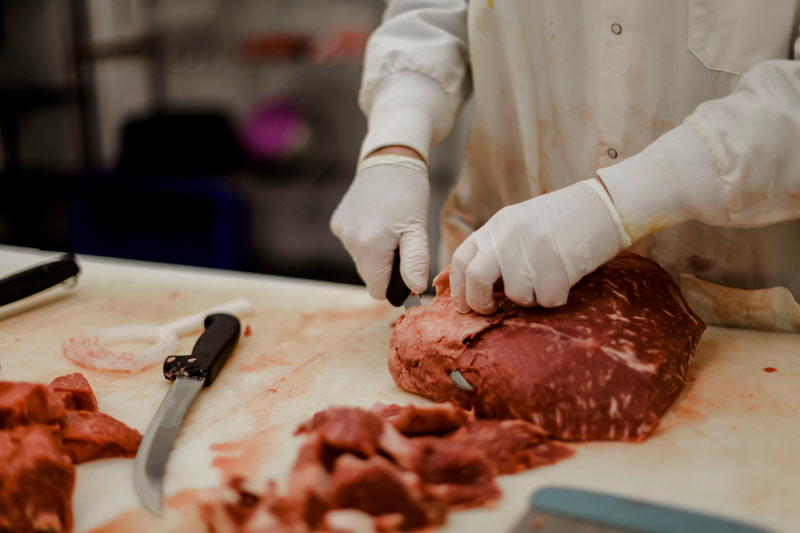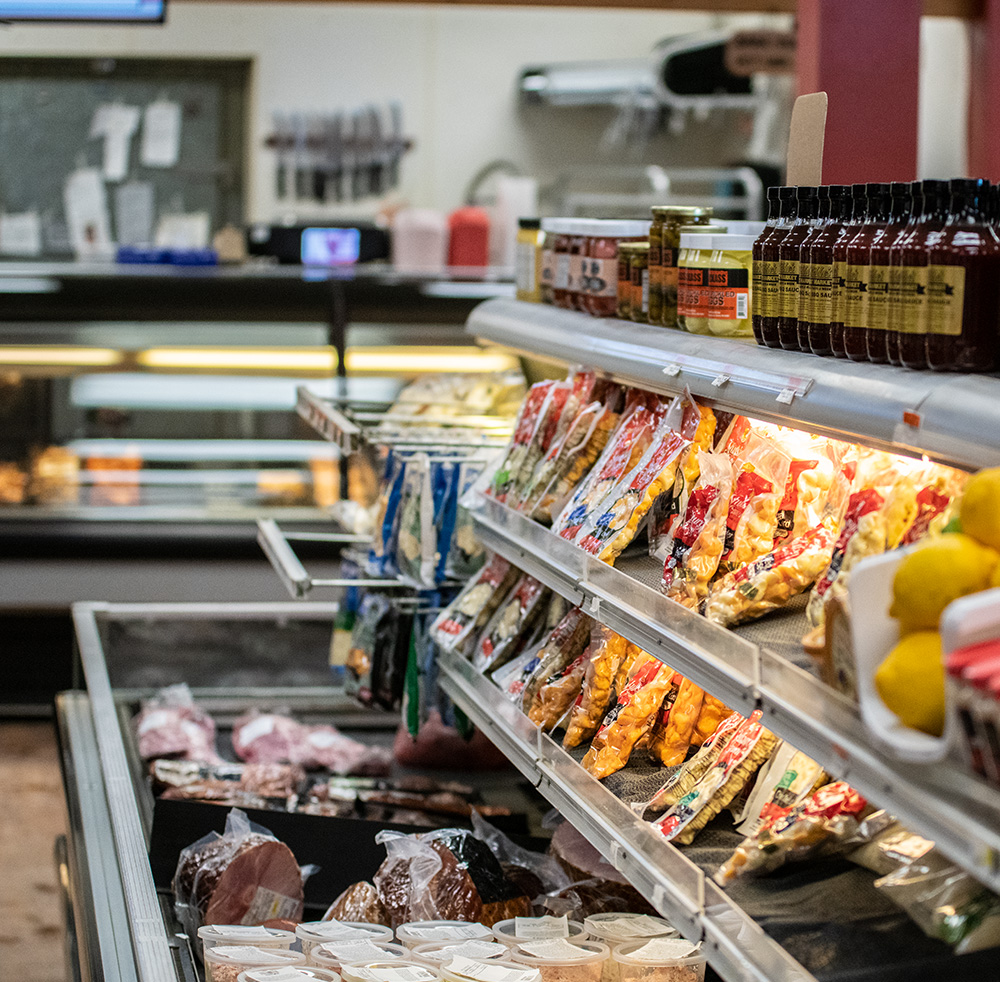Bagley Farms Meat Market Edwardsville IL: Your Go-To Destination for Neighborhood Meat Choice
Bagley Farms Meat Market Edwardsville IL: Your Go-To Destination for Neighborhood Meat Choice
Blog Article
Discover the Art of the Butcher's Cut in a Modern Meat Market
In the ever-evolving landscape of modern-day meat markets, the butcher's cut has actually transcended its typical roots, combining old-time craftsmanship with contemporary techniques. bagley farms meat market edwardsville il. Today's butchers are not simply cpus of meat; they are experienced artisans who stress sustainability and moral sourcing. Their expertise in choose and preparing cuts customized to particular culinary demands supplies an unrivaled dining experience. What genuinely sets the modern-day butcher apart is their capability to forge a much deeper connection in between customers and the origins of their meat. How do these masters equilibrium tradition with innovation, and what effects does this have for the future of meat consumption?
Development of Butchery Strategies

The mid-20th century saw butchery strategies better improved by clinical insights right into muscular tissue biology and meat aging, improving both tenderness and taste. Innovations like vacuum cleaner product packaging and refrigeration prolonged product shelf-life, allowing butchers to expand offerings and enhance quality assurance. This period additionally noted the increase of specialized tools, such as band saws and meat slicers, which boosted precision and efficiency in meat handling.
The 21st century has introduced electronic innovation into the butchery world. Electronic systems now assist in tracking animal provenance and optimizing cuts to meet particular consumer choices. In addition, a revival in artisanal butchery has actually arised, mixing typical abilities with modern-day understanding to satisfy consumers seeking moral and sustainable meat alternatives. This development underscores a vibrant interplay in between tradition and advancement, meeting modern needs while protecting the craft's heritage.

Recognizing Meat Cuts

Comprehending the ins and outs of meat cuts is necessary for both butchers and consumers seeking quality and worth. Each cut originates from a various part of the animal, presenting one-of-a-kind tastes, structures, and cooking approaches. Proficiency of these differences not only boosts cooking experiences however also optimizes the energy of each carcass. For butchers, accurate cuts reflect ability and regard for the craft, guaranteeing minimal waste and optimum yield.
The main categories of meat cuts consist of primal, sub-primal, and retail cuts. Primitive cuts, such as the loin, rib, and chuck, are the large areas initially divided from the carcass. Butchers then damage these down even more right into sub-primal cuts, before ultimately producing retail cuts readily available to consumers, like ribeye or tenderloin. Each phase requires mindful attention to physiological structure and muscle mass composition.
Understanding muscle mass make-up is critical; muscular tissues utilized much more regularly by the pet tend to be harder and are best suited for sluggish food preparation methods, while less-used muscle mass, like those located in the loin, are more tender and suitable for barbecuing or roasting. Knowledge with these distinctions empowers customers to make enlightened selections, enhancing their culinary ventures.
Selecting Quality Meat
Picking the ideal meat includes more than just selecting an aesthetically appealing piece from the display screen. The art of choosing high quality meat requires a critical eye and expertise of certain characteristics that signify freshness and quality.
Second of all, take into consideration the marbling, which describes the white streaks of fat within the muscle. Proper marbling is a crucial sign of tenderness and taste, as it melts during cooking, boosting the meat's juiciness. Remember, greater marbling usually associates with superior quality cuts, such as USDA Prime.
Appearance is an additional important aspect; meat needs to really feel firm to the touch, not slimy or extremely soft. Additionally, bear in mind the fragrance. Fresh meat should have a tidy, neutral smell, devoid of any sour or repulsive odors.
Coupling Cuts With Cooking Techniques
Successfully matching cuts of meat with the ideal cooking approaches is important for attaining optimal flavor and texture. These techniques boost the click here for info meat's natural flavors and make certain a juicy coating.
Conversely, tougher cuts like brisket and chuck roast are rich in collagen, which breaks down right into jelly when prepared gradually. These cuts are excellent for braising or slow roasting, allowing the meat to soften over time and develop deep, complex tastes. Similarly, cuts such as brief ribs and pork shoulder fare well with slow-cooking approaches, where expanded cooking times change their durable structures into succulent dishes.
Lamb shanks and oxtail, which require prolonged cooking to tenderize, are ideal candidates for stewing or slow simmering. These approaches coax out abundant, hearty flavors while keeping wetness. By comprehending the special qualities of each cut, chefs and home chefs alike can raise their culinary creations, ensuring each recipe is both pleasing and unforgettable.
The Butcher's Role Today
Browsing the developing landscape of the modern meat hop over to these guys market, the butcher's duty today prolongs beyond plain prep work of cuts. Contemporary butchers are culinary craftsmens, teachers, and supporters for sustainable practices.
In enhancement to crafting exact cuts, butchers now involve directly with consumers, offering cooking recommendations and tailoring choices to match individual demands and preferences. Their competence in meat aging, marbling, and taste profiles equips customers to make informed choices, boosting their culinary experiences. This tailored service exhibits the butcher's evolving function as a relied on advisor in the kitchen area.
In addition, butchers are pivotal in lessening waste, making use of whole animals to develop varied products such as sausages and stocks - bagley farms meat market edwardsville il. This thorough method not only appreciates the pet yet also lines up with contemporary sustainability goals. By doing this, the modern butcher symbolizes both practice and technology, adapting to an ever-changing market while preserving the virtuosity his response and stability of their craft

Verdict
Mastery in recognizing diverse meat cuts and high quality indications equips butchers to provide educated referrals, aligning certain cuts with optimal food preparation approaches. By honoring historical techniques while embracing contemporary needs, the butcher's role stays vital in today's advanced meat market.
Report this page